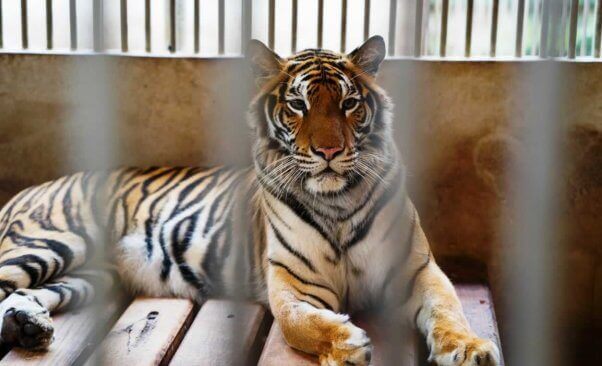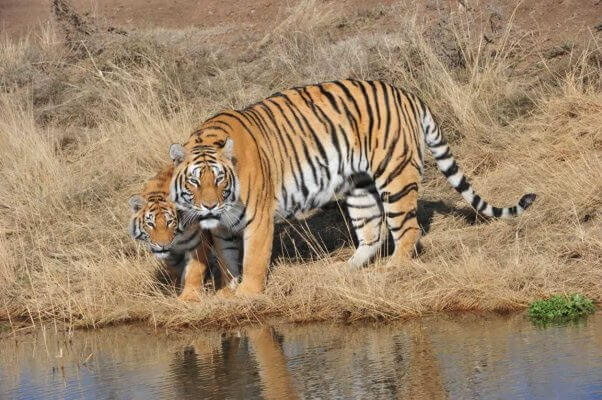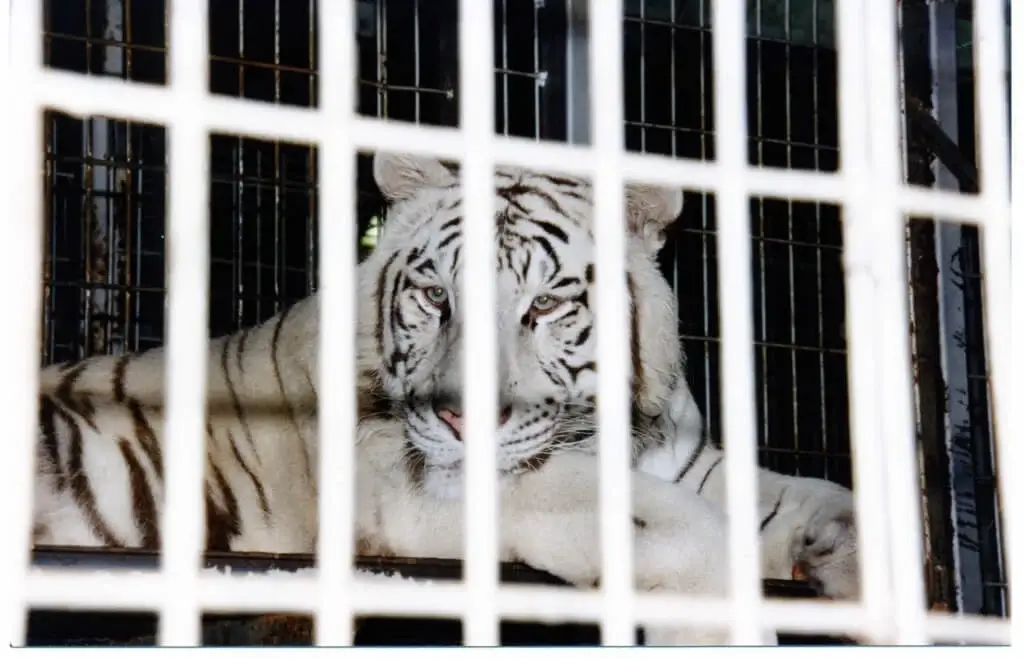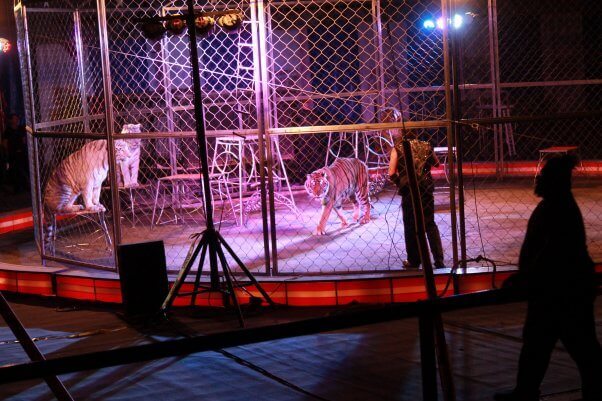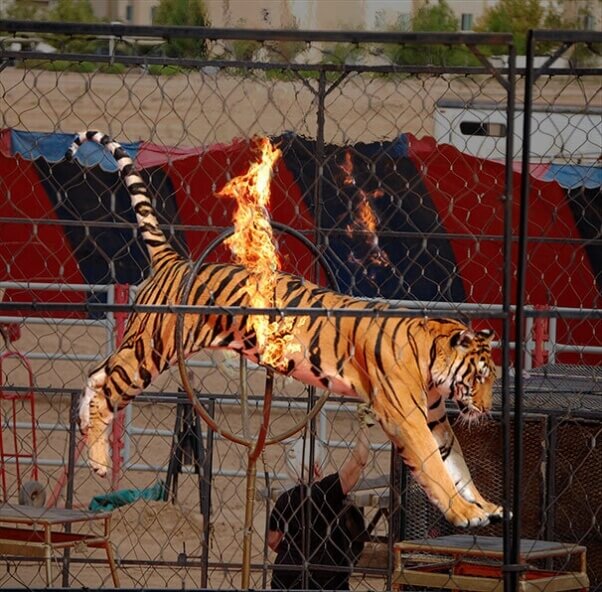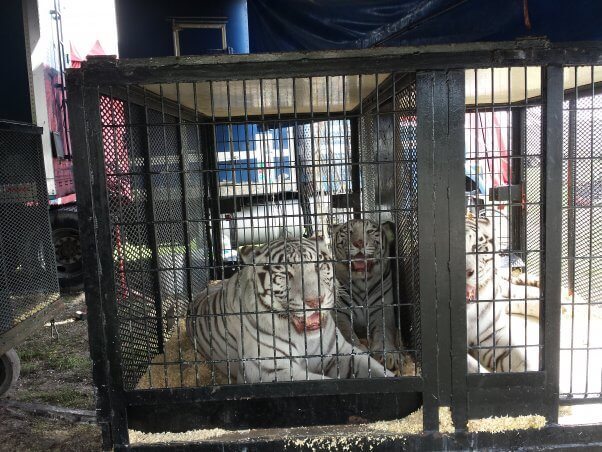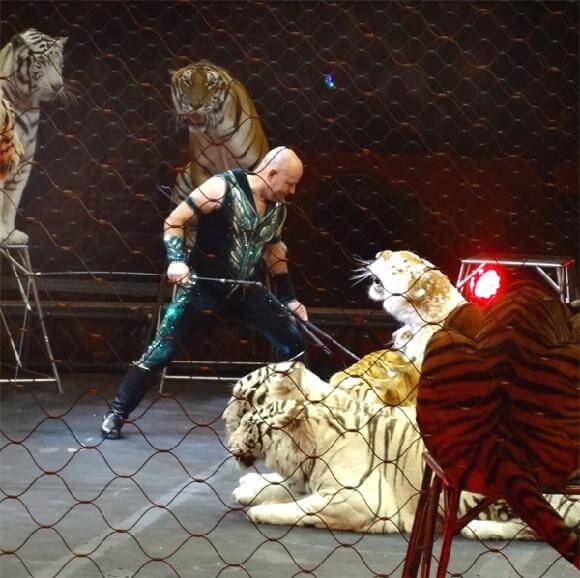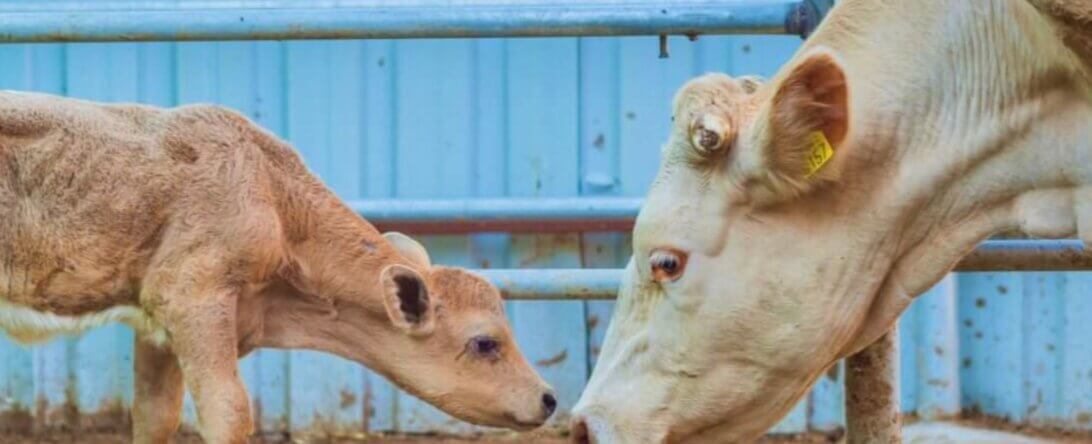10 Facts Circuses Don’t Want You to Know About Big Cats
Who else is excited to watch a spectacular display of human talent when Ringling Bros. and Barnum & Bailey Circus returns without exploiting animals? I know I am! It’s going to feel so good to watch some fun entertainment knowing that everyone who’s part of the show has chosen to be there.
Some people accuse PETA of wanting to shut down businesses, but the truth is that we just want them to stop hurting animals. There are a million creative ways to run a business that don’t include tearing someone away from their family and exploiting them. I’m so happy that Ringling Bros. is walking a new path, but my heart is sad for all the big cats who are still being abused by other circuses that need to follow suit.
I hope you’ll join us in the movement for entertainment that’s creative and respectful of animals and that allows them their freedom. Here are 10 reasons why big cats don’t belong in circuses—let’s keep them in mind while working toward a new, more compassionate society:
1. In circuses, big cats are often forced to live in cramped cages. That means they eat, drink, sleep, and even poop and pee in the same small space. Can you imagine going to the bathroom and sleeping in the same place?
2. Tigers are naturally semi-nocturnal and love water. In circuses, they’re forced to perform in the daytime and denied access to any kind of watering hole.
3. Big cats are trained through punishment, including food deprivation.
4. In their natural homes, cubs grow up with loving mothers. But lions and tigers used in circuses were torn away from their mothers shortly after birth, causing emotional pain to both the mothers and the cubs.
5. As a result of a grueling life in the circus, many big cats suffer psychologically. The stressful, unnatural environment sometimes causes them to pace back and forth in severe distress.
6. Tigers are solitary animals, but circuses ignore this fact and make them live in often incompatible groups, sometimes resulting in fights and injuries.
7. Tigers have an innate fear of fire, yet they’re beaten to make them jump through burning hoops. Imagine how terrifying circus trainers must be if tigers would rather jump through FIRE than face punishment.
8. Circuses easily get away with routine abuse because no government agency monitors training sessions. Investigative footage shows that big cats are dragged by heavy chains around their necks and hit with sticks.
9. Big cats are often confined to transport cages that are barely larger than their own bodies. The only relief that many get from this confinement is during their brief performances, when they’re subjected to whippings and loud crowds instead.
10. Since 1990 in the U.S. alone, 126 captive big cats and 23 humans have died and more than 255 humans have been injured as a result of forcing big cats to be in close contact with humans.
This abuse will only end when ALL animals have been removed from circuses! You can help big cats and others by avoiding cruel shows and choosing to patronize animal-free ones instead.
Text peta2 to 30933 for ways to help animals, tips on compassionate living, and more!

Terms for automated texts/calls from peta2: http://peta.vg/txt. Text STOP to end, HELP for more info. Msg/data rates may apply. U.S. only.

